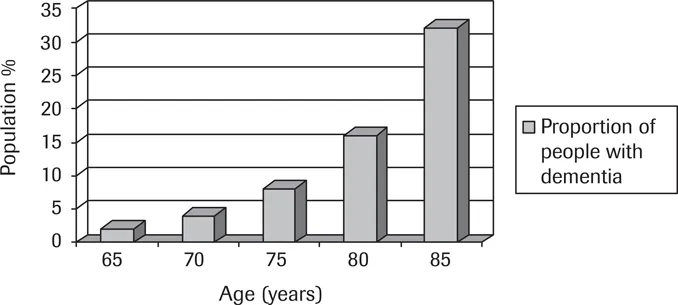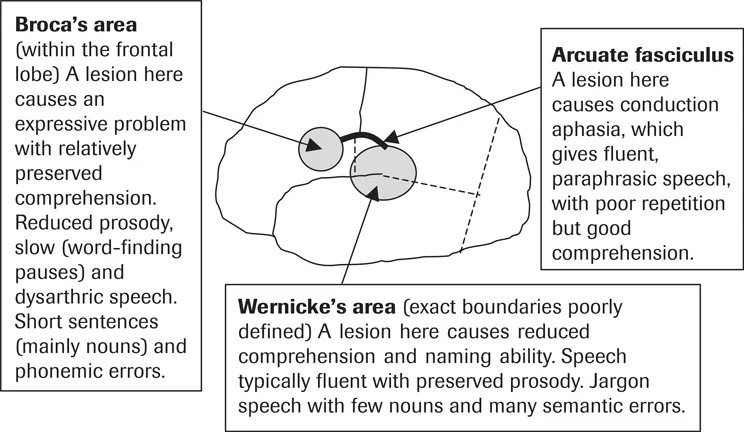
eBook - ePub
Essential Geriatrics, Third Edition
Woodford Henry
This is a test
Condividi libro
- 512 pagine
- English
- ePUB (disponibile sull'app)
- Disponibile su iOS e Android
eBook - ePub
Essential Geriatrics, Third Edition
Woodford Henry
Dettagli del libro
Anteprima del libro
Indice dei contenuti
Citazioni
Informazioni sul libro
This third edition of Essential Geriatrics has been comprehensively updated and expanded, and now includes over 200 questions and answers throughout the text in the 'best of five' format. This text specifically focuses on the key aspects of elderly care, spanning both general medicine and the particular problems encountered in geriatrics as a
Domande frequenti
Come faccio ad annullare l'abbonamento?
È semplicissimo: basta accedere alla sezione Account nelle Impostazioni e cliccare su "Annulla abbonamento". Dopo la cancellazione, l'abbonamento rimarrà attivo per il periodo rimanente già pagato. Per maggiori informazioni, clicca qui
È possibile scaricare libri? Se sì, come?
Al momento è possibile scaricare tramite l'app tutti i nostri libri ePub mobile-friendly. Anche la maggior parte dei nostri PDF è scaricabile e stiamo lavorando per rendere disponibile quanto prima il download di tutti gli altri file. Per maggiori informazioni, clicca qui
Che differenza c'è tra i piani?
Entrambi i piani ti danno accesso illimitato alla libreria e a tutte le funzionalità di Perlego. Le uniche differenze sono il prezzo e il periodo di abbonamento: con il piano annuale risparmierai circa il 30% rispetto a 12 rate con quello mensile.
Cos'è Perlego?
Perlego è un servizio di abbonamento a testi accademici, che ti permette di accedere a un'intera libreria online a un prezzo inferiore rispetto a quello che pagheresti per acquistare un singolo libro al mese. Con oltre 1 milione di testi suddivisi in più di 1.000 categorie, troverai sicuramente ciò che fa per te! Per maggiori informazioni, clicca qui.
Perlego supporta la sintesi vocale?
Cerca l'icona Sintesi vocale nel prossimo libro che leggerai per verificare se è possibile riprodurre l'audio. Questo strumento permette di leggere il testo a voce alta, evidenziandolo man mano che la lettura procede. Puoi aumentare o diminuire la velocità della sintesi vocale, oppure sospendere la riproduzione. Per maggiori informazioni, clicca qui.
Essential Geriatrics, Third Edition è disponibile online in formato PDF/ePub?
Sì, puoi accedere a Essential Geriatrics, Third Edition di Woodford Henry in formato PDF e/o ePub, così come ad altri libri molto apprezzati nelle sezioni relative a Medizin e Medizinische Theorie, Praxis & Referenz. Scopri oltre 1 milione di libri disponibili nel nostro catalogo.
Informazioni
PART B
Brain
CHAPTER 6
Dementia
DEFINITION
Dementia is a syndrome attributed to disease of the brain, usually of a chronic or progressive nature, in which there is disturbance of multiple brain functions. These impairments may include calculation, learning capacity, language and judgement. It is usually only considered present when there is resultant impact on social or occupational function. Consciousness is usually unaltered. There may also be deterioration in emotional control, social behaviour or motivation. In other words, it is not simply memory loss but a complex condition that affects more than one aspect of cognition.
EPIDEMIOLOGY
Approximately 8–10% of people over the age of 65 years in the Western world have dementia. The prevalence rises from around 2% of those aged 65 to more than 35% of those over 85 years (Figure 6.1).1–3 This figure represents, roughly, a doubling in prevalence for every five-year increase in age. A more positive thought is that around two-thirds of the very old do not have dementia. The number of people worldwide with dementia is predicted to double every 20 years.4 The prevalence of dementia is higher among hospitalised older people – being present in around 48% of those aged 80–89 and 66% of those aged over 90.5

In addition, there is a significant population of individuals with some clinical evidence of cognitive impairment that is not severe enough to meet the criteria for a diagnosis of dementia (‘mild cognitive impairment’ – see p. 94). However, cognitive decline is not an inevitable feature of ageing and many older people continue to function at their baseline level (see p. 14).6
Mortality rates are increased in people with dementia compared to people without this condition. Survival time is heavily dependent on age at the time of diagnosis. A study found that people aged 65–69 years survived a median of 10.7 years, those aged 70–79 survived 5.4 years, those aged 80–89 survived 4.3 years, and those over 90 survived 3.8 years.7 The overall median survival time was 4.5 years.
COGNITION
Attention
Attention is the ability to focus on a task and is determined by both concentration and arousal. It is mediated by the reticular activating system, which is a complex series of connections between the cerebral cortex, thalamus and the reticular formation (a ‘net-like’ collection of cells on the surface of the brainstem). In the presence of reduced attention other brain functions are also impaired.
Memory
Traditionally memory function has been loosely divided into short-term and long-term components. More recently, memory has been classified into four categories,8 these are outlined below.
➤ Episodic memory: The memory of specific personal events and experiences, for example what you did on holiday last year. Predominantly mediated by the medial temporal lobes and limbic system (including the hippocampus – see Figure 6.7). Insults to this system tend to affect more recently learned memories more than older ones (i.e. short-term memory is more affected than long-term memory).
➤ Semantic memory: Knowledge of the world not related to personal experiences. This includes the names of objects, for example the names of animals. This is predominantly mediated by the inferolateral temporal lobes.
➤ Procedural memory: The memory of how to perform tasks, such as riding a bike. The basal ganglia and cerebellum predominantly mediate this. It occurs at a subconscious level. It may be particularly affected in movement disorders (see Chapter 9).
➤ Working memory: Short-term (seconds to minutes) ‘keeping it in your head’. It can be phonologic (e.g. a phone number) or spatial (e.g. manipulating an object in your mind). The prefrontal cortex is important in this process along with other brain areas depending on the nature of the task. For an effective working memory, it is also necessary to be able to maintain attention/concentration.
Memories may be conscious (declarative) or non-conscious (non-declarative). Confabulation is the making-up of new ‘memories’ to replace those that have been lost. Memory impairment is common to many disorders, including dementia, delirium and depression.
Language
The dominant hemisphere encodes language. In all right-handed and most left-handed people this is the left side of the brain. The language centres are more diffuse and less well defined than traditionally thought. They include Broca’s area in the frontal lobe and Wernicke’s area at the margin of the temporal and parietal lobes. There is also a network of connections between these areas, called the arcuate fasciculus (see Figure 6.2). Paraphrasia is a term for the use of abnormal or incorrect words. These can be semantic (similar categories, e.g. ‘dog’ for ‘cat’), phonemic (similar sounds, e.g. jar for car) or neologistic (made up words, e.g. strub for car). Prosody is a term for the melodic characteristics of speech including intonation, stress and cadence (rhythm). Anomia is a term for a naming deficit (e.g. cannot say the name for a pen). Anomic dysphasia is also called ‘word block’. With this disorder people typically stop mid-sentence. Its presence is associated with space-occupying lesions within the dominant lobe. Progressive aphasia is a term for a slowly worsening non-fluent aphasia secondary to left frontotemporal degeneration (plus apraxia). Dysgraphia (impaired writing) and dyslexia (impaired reading) are usually associated with dysphasia.

Visuospatial skills
Visuospatial deficits tend to be more severe with non-dominant hemisphere damage but are not unique to it. Constructional ability involves input from occipital (visual), parietal (association areas link visual and motor pathways) and frontal (motor) lobe functions.
Errors observed include perseveration (repetition of lines/shapes) and ‘closing in’ (merging objects together). Constructional ‘apraxia’ can occur with damage to either hemisphere. When affecting the left over-simplification of copied objects is seen, with the right an over-elaboration or ‘explosion’ of constituent parts is more typical. ‘Neglect’ is a term used for spatial inattention, which can cause visual or sensory extinction (stimuli are preferentially detected by one side of the body despite intact sensory systems).
Executive function
The frontal lobes perform executive functions, which relate to personality (drive, motivation, inhibition) and behaviour. Lesions here lead to failures with learning from errors, poor goal setting, intrusion of unwanted thoughts, perseveration (becoming fixed on one idea), the inability to switch tasks (also called ‘set-shifting’, leading to ‘stimulus-bound’ behaviour), reduced empathy, and poor sequencing of tasks. Affected individuals typically have reduced interest in their environment and poor social drive leading to impaired interpersonal relations and hygiene.
Apraxia
Apraxia is a high-level motor deficit. It is mainly seen with left hemi...